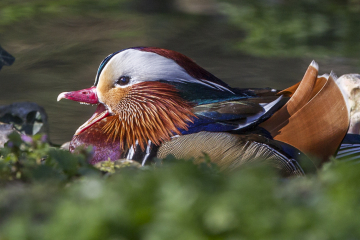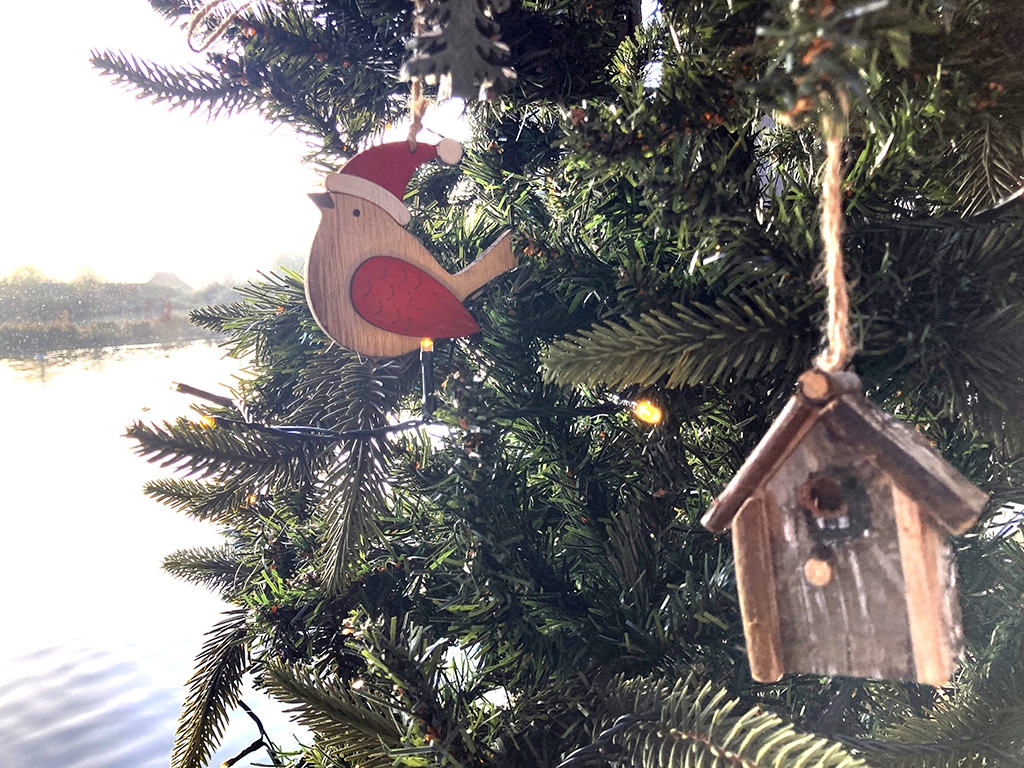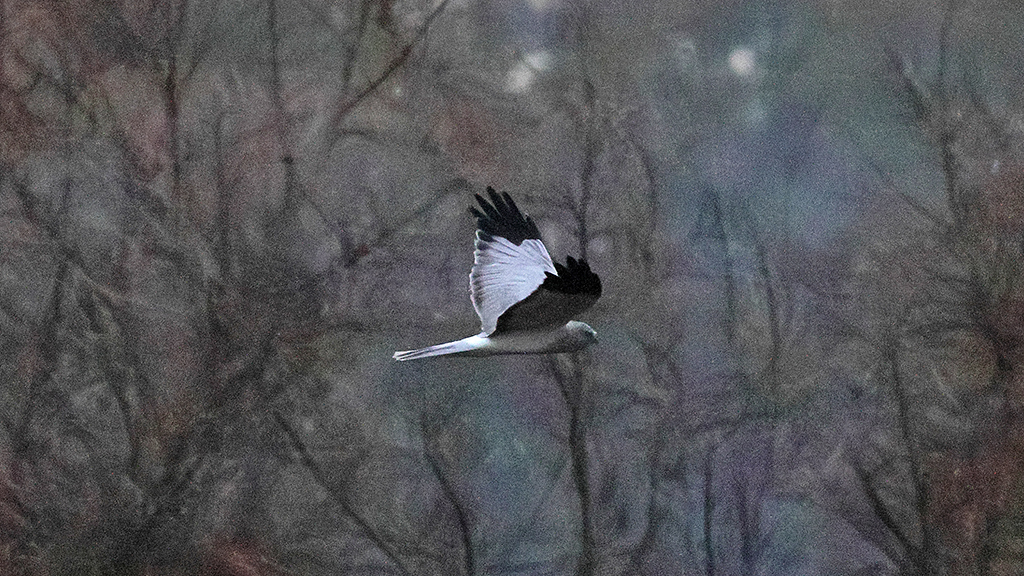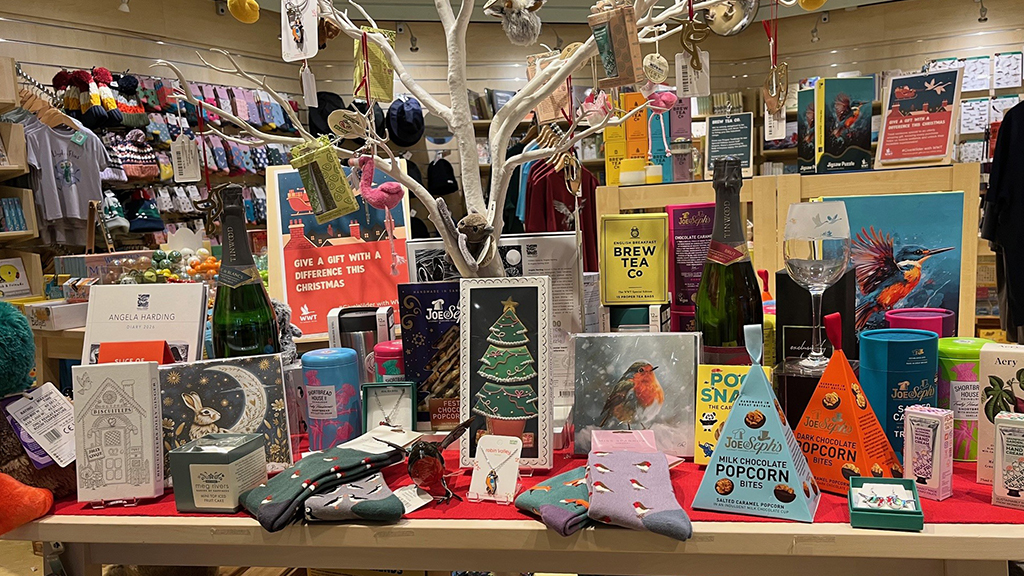Wildlife spotting this April at Arundel
Our wildlife hides are currently closed but there are many ways and places to experience wildlife this spring at Arundel Wetland Centre.
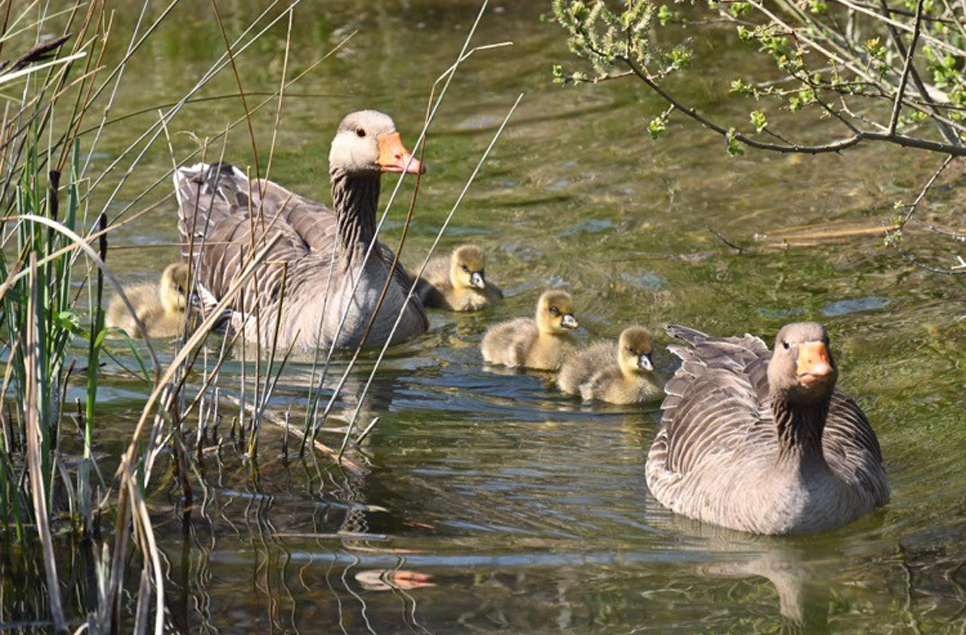
Our wildlife hides are currently closed but there are many ways and places to experience wildlife this spring at Arundel Wetland Centre. Our pathways and boardwalks take you to waterways, reedbeds and wet meadows around the site ... and there are a few 'secret spots' to sit quietly and meld into the wetland landscape.
Oystercatcher couples
A couple of pairs of oystercatchers are moving around the site apparently looking for this year’s perfect nesting spot. In previous years they have nested on the gravelled roof of the Sand martin hide (see clip below), in the open space of the Tundra pen and in the middle of the construction zone for the Pelican Cove exhibit! Look down the path towards the hide and check the roof!
Swirls of sand martins
Sand martins have been using the artificial nesting bank in the Sand martin hide. We hope they will stay and nest again this year. Sand martins, swallows and house martins stop off at Arundel Wetland Centre each April on their way northwards, returning from winter homes in Africa and Europe. They are easier to see on cloudy days when birds are hunting flying insects that are pushed closer to the ground by colder air. Look up while near the Sand martin hide and in the Wildlife garden. They are fast fliers!
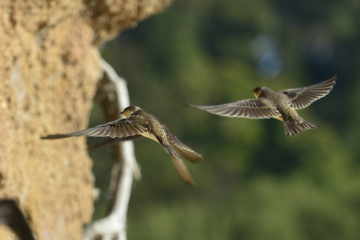
Looking for lapwings
Lapwings have paired up and are nesting on the wet grassland in front of the Lapwing hide Ramsar & Sand martin hides and on the Arun Riverlife lagoon. With the hides currently closed you may not see them sitting on their shallow scrape nests but look skyward if you hear their loud, slide-whistle calls. Lapwings are excellent parents and take to the air to mob crows and other egg predators who move into their territory.
Kingfishers
The kingfishers are nesting in the nesting bank on the Arun Riverlife lagoon this April. Although the Discovery hide is closed you may catch site of them when you exit the visitor centre walking towards Pelican Cove. Look immediately to the left of the doors and across the lagoon to the nest bank – the kingfisher pair are nesting in hole number five (counting in from the left). The birds also spend time on the perches out in front of the bank.
Ducks at the Sussex Screen
Our first secret spot also known as our roofless hide, is the Sussex Screen. This woven willow break opens onto a pond at the back of the reedbed which is a favourite haunt of mandarins, gadwall ducks and mallards. There are two benches to spend a quiet moment on in this south-facing sun trap. Visit in spring as the summer wasps love the sticky trees in the area.
Mandarin Duck by Romney Turner
Birds at the Willow Arbour
Secret spot number two is located at the end of the Tranquil Trail, just past the Lapwing hide. The Willow Arbour is perfect for quiet moments. Time spent inside this living shelter may reward you with a visit from hungry wrens or the flicker of long-tailed tits who often use the scrub nearby to disguise their nests. It’s a peaceful spot with the sounds of the wet grassland birds on one side and the water of Wetland Dscovery on the other.
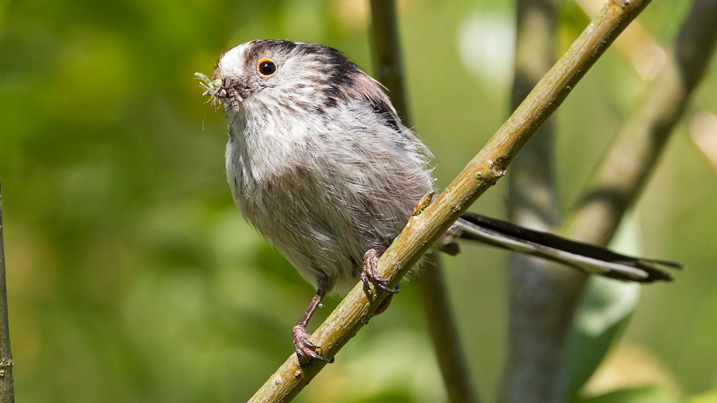
Water voles
A recent wildlife survey by our wardens found that the ditch that runs beside the Tranquil trail from the Ramsar hide past the Lapwing hide and beyond is a water vole hot spot on the reserve. Look for, little stacks of cut reeds that make up water vole feeding piles or listen for crunching and rustling at the waterside.The reedbed boardwalk often has feeding piles along the edge.
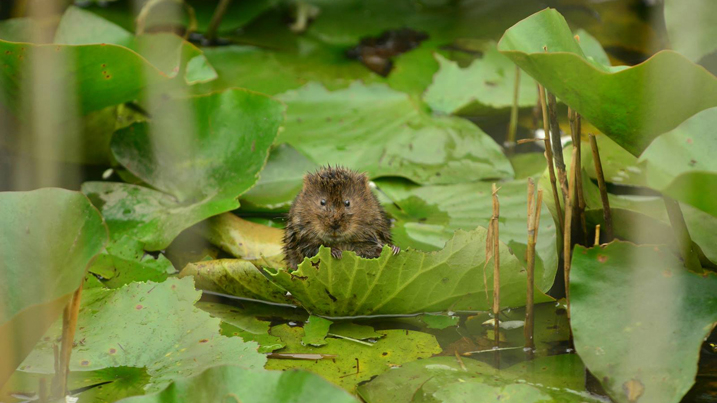
Mute swans
A pair of these large swans are sitting on their huge nest next to our entry boardwalk – easily visible when you come to visit. In the past these swans often nest just off pathways so they are not disturbed by all the visitors. The cob (male swan) usually chooses the nest site, but if the pen (female swan) doesn’t like it, he’ll have to try again!
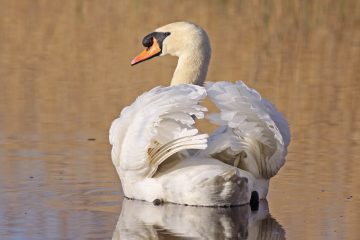
Grey wagtails
Pelican Cove is home to the new Dalamatian pelicans and red breasted geese which are part of our living collection of wetland water birds. Look closely at the pelican’s log perches. Tiny, wild grey wagtails are often spotted here too, hopping along the logs hunting the bugs in the bark.
Ducks on Wetland Discovery
Book a boat safari or look across the water from the hedgerow breaks along the Tranquil Trail. Boat drivers report many mallard families, pochard pairs and tufted ducks bobbing about. Above look out for red kites and buzzards from the Offham Hangar.
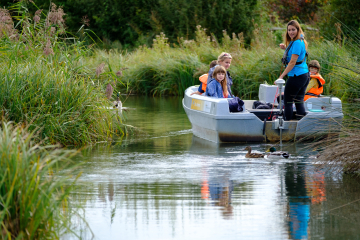
Greylag goslings, coot chicks and more
It’s the time for spotting fluffy ones of all descriptions. There is a coot nest with chicks in the pond in front of the Coastal Creek aviary. This future Wetland Treatment System pond close to the path is also popular with mallard ducklings and greylag goslings. Be warned that in spring what is a treat for our eyes can become a treat for larger wetland birds. Herring gulls, grey herons and birds of prey hunt chicks so it’s natural for them to make off with little ones from the ponds and ditches across the site.
Coot chicks by visitor June Keeble
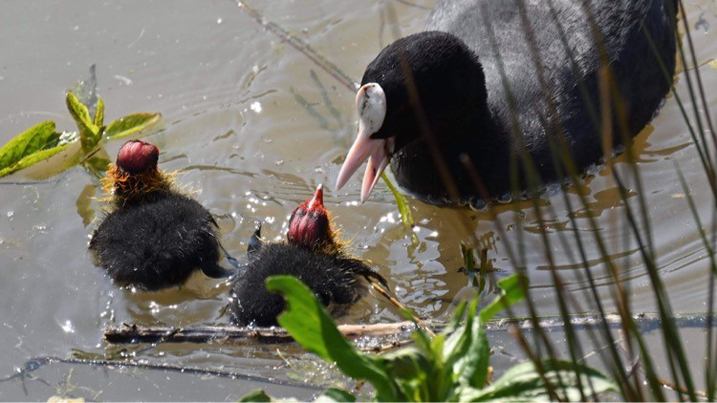
Songbirds and warblers
The feeders in the Wood Loop are atwitter with tits and finches – patience gets good pics. The long path through the reserve with the reedbed on one side and hedgerows on the others is a great spot for warblers. The Reedbed boardwalk is a barrage of birdsong at the moment – a treat for the ears even if they are hard to spot.
